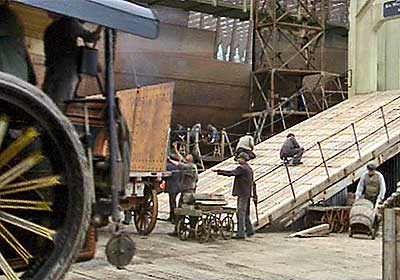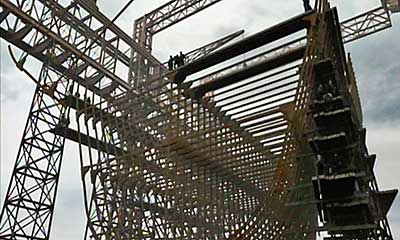BUILDING THE HULL
Work started on building the Titanic on 31 March 1909. It was just short of two years since Bruce Ismay and Lord Pirrie had lingered over their port planning the most luxurious liners the world had ever seen. During that time the finance had been raised to support such an ambitious project and the Olympic and Titanic had been designed in intricate detail.
20 horses to drag it into the shipyard for installation.
Once work started it progressed at a furious pace. First the keel was laid – a gigantic steel spine to support the 880 foot (268m) length. The keel plate was as high as a man. Meanwhile the steel frames that would form the Titanic’s ‘ribs’ were being prepared. In a moulding loft the size of a football pitch, full-scale sections of the ship were drawn in chalk on the floor. The steelwork was then bent to fit these shapes. Three hundred frames formed the hull – each lowered into place one by one.
It took a year to build the Titanic’s skeleton.

She was carrying 3,364 mailbags when she sank.
Then it was time to fix the outer skin and make her watertight. Two thousand steel plates each 30 feet long (9m) and six feet wide (2m) long were held in place by over three million metal rivets which all had to be hammered in by hand. Each plate weighed three tons.
It was hot, sweaty, dangerous and noisy work.
Hand riveters worked in ‘gangs’ of three men and a boy. Two men worked on the outside of the ship hammering in the rivets while a third man was inside with a bigger hammer to hold the rivets in place. The boy’s job was to heat the rivets in a portable furnace inside the hull, then press the red-hot rivet through the hull using pincers.
Twenty-six months after work began, the hull of the Titanic was completed.


